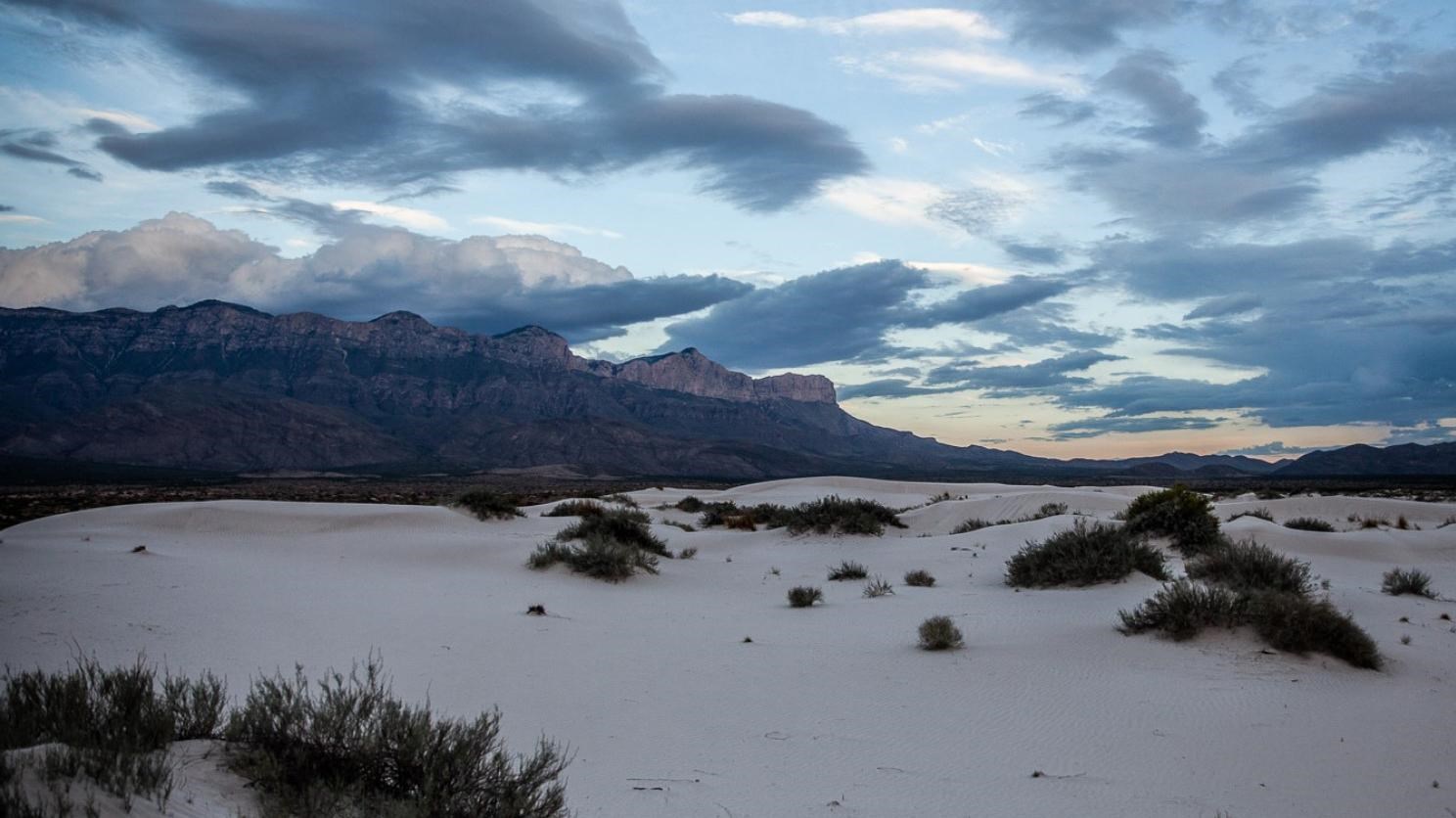Last updated: September 22, 2021
Place
Salt Basin Dunes Trailhead

Quick Facts
Location:
West side of Guadalupe Mountains National Park
Amenities
9 listed
Historical/Interpretive Information/Exhibits, Information, Parking - Auto, Parking - Bus/RV, Picnic Shelter/Pavilion, Restroom, Restroom - Accessible, Trailhead, Trash/Litter Receptacles
The white gypsum sands of the Salt Basin Dunes rise 100 feet from the desert floor and provide a brilliant contrast to the dark, towering cliffs of the Guadalupe Mountains. To the west are barren salt flats that are the source of these beautiful dunes. When rain runs off the highly soluble limestone rock in the adjacent mountains, salts are leached. This runoff pools in the desert basin and as it evaporates, large grains of mineral salts are left behind. The wind carries the salt grains northeast toward the Guadalupe Mountains and deposits them at the base of the western Guadalupe escarpment to form gypsum dunes.
The dune landscape is geologically young. It developed over the past few thousand years as dissolved salts and gypsum from an adjacent lake bed were deposited by wind into ever changing sculpted hill, swale, and ripple formations. The mesquite coppice dunes form stabilized spots where wildlife abounds.
The dunes environment is home to gypsum-loving plant and animal life such as gypsum scalebroom, a white variant of the lesser earless spiny lizard, and five of the park’s seven species of scorpions.
Visitors are allowed to hike over the open dunes, but are encouraged to avoid walking on the fragile biological soil crusts. Visitors may also hike on abandoned ranch road traces and discover windmills and other historic remnants of the past. Temperatures in the dunes area are generally mild in the winter and dangerously hot in the summer.
The dune landscape is geologically young. It developed over the past few thousand years as dissolved salts and gypsum from an adjacent lake bed were deposited by wind into ever changing sculpted hill, swale, and ripple formations. The mesquite coppice dunes form stabilized spots where wildlife abounds.
The dunes environment is home to gypsum-loving plant and animal life such as gypsum scalebroom, a white variant of the lesser earless spiny lizard, and five of the park’s seven species of scorpions.
Visitors are allowed to hike over the open dunes, but are encouraged to avoid walking on the fragile biological soil crusts. Visitors may also hike on abandoned ranch road traces and discover windmills and other historic remnants of the past. Temperatures in the dunes area are generally mild in the winter and dangerously hot in the summer.
